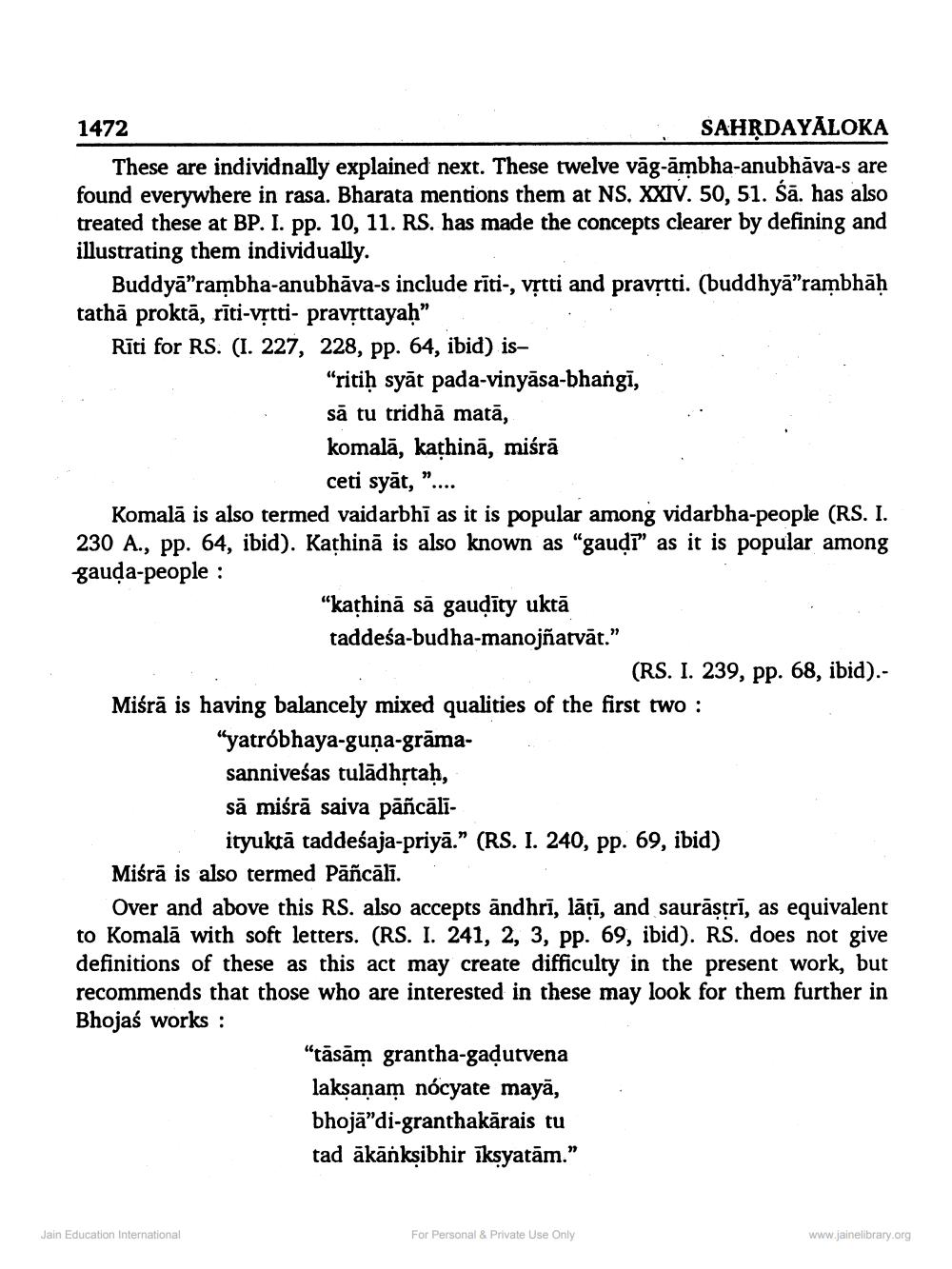________________
1472
SAHRDAYALOKA These are individnally explained next. These twelve vāg-ambha-anubhāva-s are found everywhere in rasa. Bharata mentions them at NS. XXIV. 50, 51. Šā. has also treated these at BP. I. pp. 10, 11. RS. has made the concepts clearer by defining and illustrating them individually.
Buddyā”rambha-anubhāva-s include rīti-, vịtti and pravstti. (buddhyā”rambhāḥ tathā proktā, rīti-vștti- pravsttayaḥ" Rīti for RS. (I. 227, 228, pp. 64, ibid) is
“ritiḥ syāt pada-vinyāsa-bhangi, sā tu tridhā matā, komalā, kațhinā, miśrā
ceti syāt, ".... Komalā is also termed vaidarbhí as it is popular among vidarbha-people (RS. I. 230 A., pp. 64, ibid). Kathinā is also known as "gauļi" as it is popular among gauda-people :
“kathinā sā gaudīty uktā taddeśa-budha-manojñatvāt.”
(RS. I. 239, pp. 68, ibid).Miśrā is having balancely mixed qualities of the first two :
“yatróbhaya-guna-grāmasanniveśas tulādhrtah, sā miśrā saiva pāñcāli
ityuktā taddeśaja-priya." (RS. I. 240, pp. 69, ibid) Miśrā is also termed Pāñcālī.
Over and above this RS. also accepts andhrī, lāti, and saurāștrī, as equivalent to Komalā with soft letters. (RS. I. 241, 2, 3, pp. 69, ibid). RS. does not give definitions of these as this act may create difficulty in the present work, but recommends that those who are interested in these may look for them further in Bhojaś works :
"tāsām grantha-gadutvena laksanam nócyate mayā, bhojā"di-granthakārais tu tad ākāňkşibhir īksyatām.”
Jain Education International
For Personal & Private Use Only
www.jainelibrary.org




